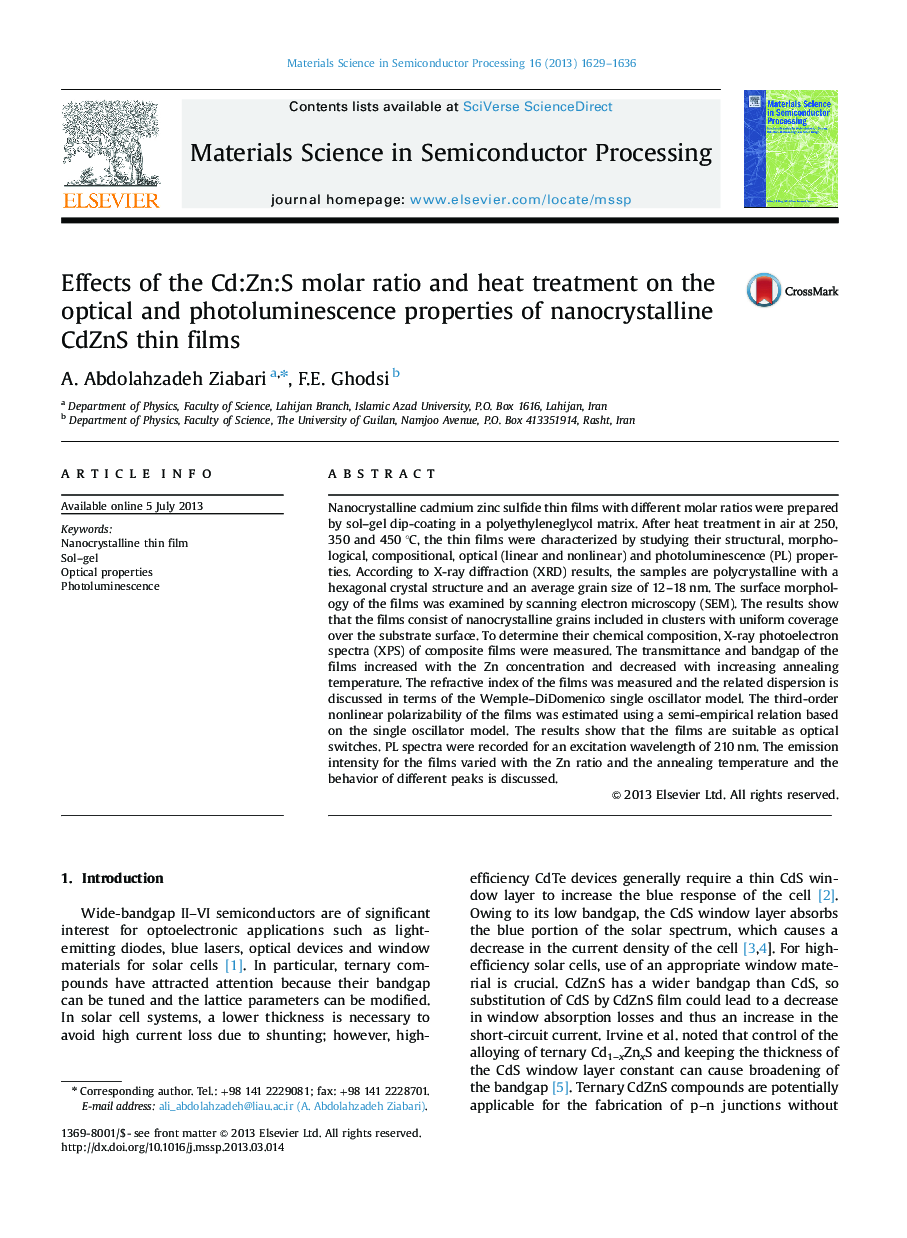| Article ID | Journal | Published Year | Pages | File Type |
|---|---|---|---|---|
| 10407027 | Materials Science in Semiconductor Processing | 2013 | 8 Pages |
Abstract
Nanocrystalline cadmium zinc sulfide thin films with different molar ratios were prepared by sol-gel dip-coating in a polyethyleneglycol matrix. After heat treatment in air at 250, 350 and 450 °C, the thin films were characterized by studying their structural, morphological, compositional, optical (linear and nonlinear) and photoluminescence (PL) properties. According to X-ray diffraction (XRD) results, the samples are polycrystalline with a hexagonal crystal structure and an average grain size of 12-18 nm. The surface morphology of the films was examined by scanning electron microscopy (SEM). The results show that the films consist of nanocrystalline grains included in clusters with uniform coverage over the substrate surface. To determine their chemical composition, X-ray photoelectron spectra (XPS) of composite films were measured. The transmittance and bandgap of the films increased with the Zn concentration and decreased with increasing annealing temperature. The refractive index of the films was measured and the related dispersion is discussed in terms of the Wemple-DiDomenico single oscillator model. The third-order nonlinear polarizability of the films was estimated using a semi-empirical relation based on the single oscillator model. The results show that the films are suitable as optical switches. PL spectra were recorded for an excitation wavelength of 210 nm. The emission intensity for the films varied with the Zn ratio and the annealing temperature and the behavior of different peaks is discussed.
Related Topics
Physical Sciences and Engineering
Engineering
Electrical and Electronic Engineering
Authors
A. Abdolahzadeh Ziabari, F.E. Ghodsi,
